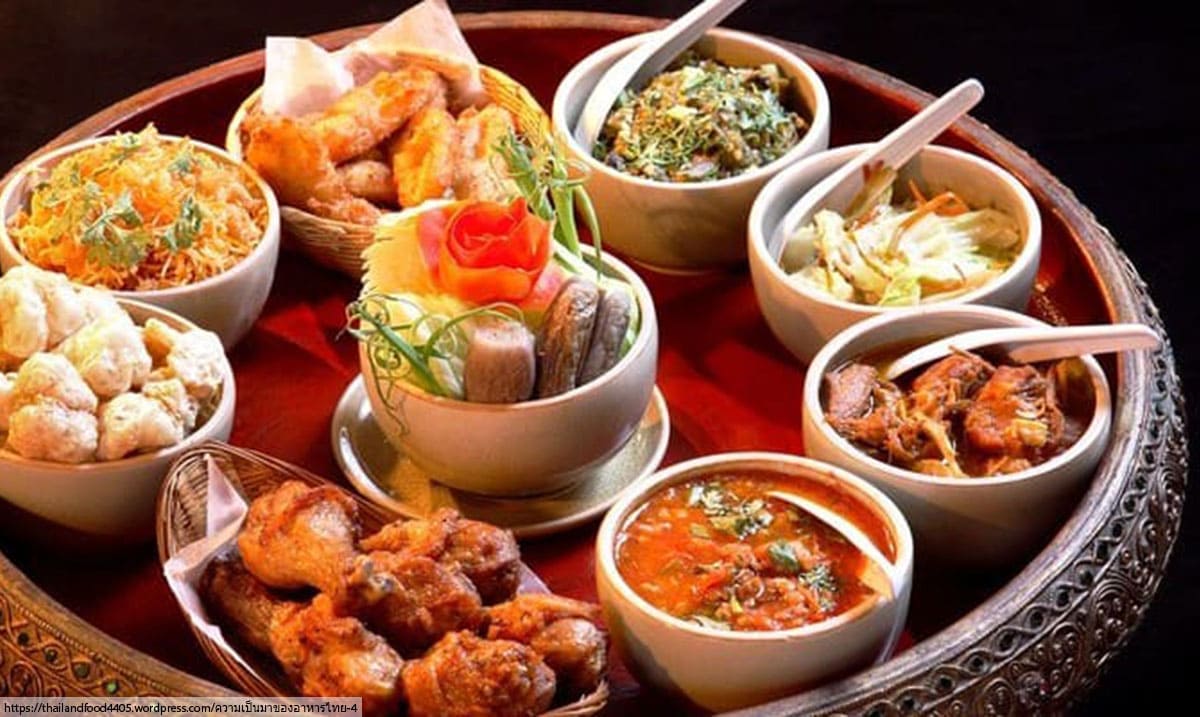The Rich Heritage and Bold Flavors of Thai Cuisine
Thai cuisine, renowned for its vibrant flavors and harmonious balance of sweet, sour, salty, and spicy, has captivated food lovers worldwide. With roots deep in ancient traditions and regional diversity, Thai food is much more than a culinary experience—it is a reflection of Thailand’s culture, geography, and history. In this article, we will explore the rich history, popular dishes, essential ingredients, and techniques that define Thai cuisine, as well as its global impact.
A Brief History of Thai Cuisine
Thai cuisine has evolved over centuries, influenced by neighboring cultures like China, India, Malaysia, and Laos. Initially, it was shaped by rice cultivation, with rice becoming the staple of every meal. Over time, as Thailand’s geographic location brought trade and migrations from India, China, and Portugal, ingredients like chilies, coconut milk, and noodles found their way into the Thai culinary palette.
The Sukhothai Kingdom (1238-1438), considered Thailand’s golden era, witnessed the development of many iconic dishes. Later, during the Ayutthaya period (1350-1767), influences from Persia and the West introduced spices and cooking techniques, adding further depth to Thai cuisine. Yet, even with these influences, Thai food remains distinctly Thai, defined by its unique flavor combinations and cooking methods.
Thai Cuisine’s Five Pillars of Flavor
One of the most remarkable aspects of Thai food is its balance of five key flavors: sweet, sour, salty, bitter, and spicy. Each dish is crafted to combine these elements harmoniously. This balance reflects the Thai philosophy of eating, where the experience of food is as important as the nutritional value.
- Sweetness is often derived from palm sugar or coconut milk.
- Sourness comes from lime, tamarind, or vinegar.
- Saltiness is typically achieved with fish sauce or soy sauce.
- Bitterness is subtle but can be found in herbs like bitter melon.
- Spiciness is delivered through chili peppers, with bird’s eye chili being a key component in many dishes.
Essential Ingredients in Thai Cooking
Thai cuisine relies on a variety of fresh, fragrant ingredients to create its dynamic flavors. Some of the most essential ingredients include:
- Lemongrass: This aromatic herb provides a fresh citrus note, used in soups, curries, and marinades.
- Galangal: A root similar to ginger, it offers a sharp, peppery flavor, integral to many curry pastes.
- Fish Sauce (Nam Pla): A fermented condiment, it is a staple in Thai cooking, lending umami and saltiness.
- Coconut Milk: Adds richness and balances the spiciness in many curries and soups.
- Thai Basil: Distinct from sweet basil, it imparts a subtle licorice flavor to stir-fries and soups.
- Bird’s Eye Chili: These small yet fiery chilies are a key source of heat in Thai dishes.
Popular Thai Dishes
Each dish in Thai cuisine is crafted to deliver a unique flavor experience, often influenced by regional variations. Here are some classic Thai dishes, each bringing its own blend of flavors:
- Pad Thai
Arguably Thailand’s most famous dish, Pad Thai is a stir-fried noodle dish with tamarind sauce, dried shrimp, eggs, tofu, and crushed peanuts. It’s typically served with a wedge of lime, allowing diners to enhance the sourness to their liking. Street vendors across Thailand serve it piping hot, often with a side of fresh bean sprouts and chili flakes. - Tom Yum Goong
This hot and sour shrimp soup is a quintessential Thai comfort food. The broth is fragrant with lemongrass, lime leaves, galangal, and fish sauce, and the addition of bird’s eye chilies provides a spicy kick. Tom Yum Goong embodies the balance of flavors, with its sharp sourness from lime juice and rich umami from shrimp. - Green Curry (Gaeng Keow Wan)
Known for its bold color and heat, green curry is a creamy coconut-based dish packed with green chilies, lemongrass, and Thai basil. It is traditionally made with chicken or fish, but variations can include beef or vegetables. The coconut milk tempers the heat, creating a smooth and flavorful curry. - Som Tum
A green papaya salad originating from northeastern Thailand, Som Tum is a spicy and tangy dish that combines shredded papaya, peanuts, dried shrimp, tomatoes, and lime juice, all pounded together in a mortar and pestle. The texture is crunchy, and the flavor is a delightful mix of sweet, sour, and spicy. - Massaman Curry
An example of foreign influence on Thai cuisine, Massaman curry showcases Persian and Indian flavors through the use of spices like cardamom, cinnamon, and cumin. It is a rich and mildly spicy dish made with coconut milk, potatoes, and peanuts, typically served with beef or chicken.
Regional Variations
Thailand’s diverse geography plays a significant role in the regional variations of its cuisine. From the north’s hearty and milder dishes to the south’s fiery curries, each region offers its own twist on traditional Thai food.
- Northern Thailand (Lanna Cuisine): Dishes here are often milder, with an emphasis on sticky rice, grilled meats, and herbal flavors. Khao Soi, a coconut curry noodle soup, is a signature dish of the region.
- Northeastern Thailand (Isaan Cuisine): Known for its spicy and pungent dishes, Isaan cuisine incorporates fermented fish and sticky rice. Laab, a minced meat salad with lime juice and herbs, is a regional favorite.
- Central Thailand: The cuisine of central Thailand is perhaps the most well-known internationally, with dishes like Pad Thai and Green Curry. Central Thai food balances all five flavor elements masterfully.
- Southern Thailand: The food in southern Thailand is the spiciest in the country, with heavy use of coconut milk, turmeric, and seafood. Gaeng Som, a sour curry, is a standout dish of the region.
Cooking Techniques in Thai Cuisine
The preparation of Thai food requires an array of cooking techniques, each method used to enhance the flavor and texture of ingredients.
- Stir-Frying: Quick cooking at high heat is essential for many Thai dishes, ensuring vegetables retain their crunch and meats stay tender. Stir-fries like Pad Krapow, made with holy basil and chilies, are popular throughout Thailand.
- Grilling: Thai street food culture thrives on grilled meats, particularly skewers of pork or chicken, served with dipping sauces.
- Pounding: A mortar and pestle is used to pound ingredients like herbs, spices, and chilies, ensuring the flavors blend together seamlessly. This is critical in dishes like Som Tum and many curry pastes.
- Steaming: Sticky rice, a staple in northern and northeastern Thailand, is typically steamed to achieve its perfect chewy texture.
Thai Food’s Global Impact
In recent decades, Thai cuisine has gained significant global recognition, earning its place among the world’s finest culinary traditions. Thai restaurants have sprung up across the globe, bringing a taste of Thailand to major cities and small towns alike. The demand for Thai ingredients such as lemongrass, fish sauce, and curry pastes has also surged, making these once-exotic components staples in home kitchens.
Thai food’s global appeal lies in its versatility and emphasis on fresh, high-quality ingredients. With an emphasis on flavor balance and cooking simplicity, Thai cuisine has influenced modern cooking trends, from street food to fine dining.
Personal Reflections
During a trip to Thailand, I had the opportunity to speak with Chef Anong, a celebrated chef in Bangkok known for her modern take on traditional Thai dishes. When asked about her favorite dish, she smiled and said, “Thai food is not just about taste; it’s about the feeling you get when you eat it. The heat of the chili, the brightness of lime—it’s like a dance of flavors in your mouth.”
Experiencing Thai food firsthand, from the bustling street markets to intimate home kitchens, has deepened my appreciation for the complexity and artistry behind each dish. The joy of Thai food lies not just in its ingredients but in the shared experience of eating, where food is central to family, culture, and celebration.
Enjoy Thai Cuisine
Thai cuisine’s history, diversity, and unparalleled flavor profiles have earned it a place of honor in the world of gastronomy. Whether you’re savoring the street food of Bangkok or cooking a curry in your own kitchen, Thai food offers a rich, immersive experience in every bite. The harmony of flavors, rooted in centuries of tradition and innovation, continues to inspire chefs and food lovers around the globe.




